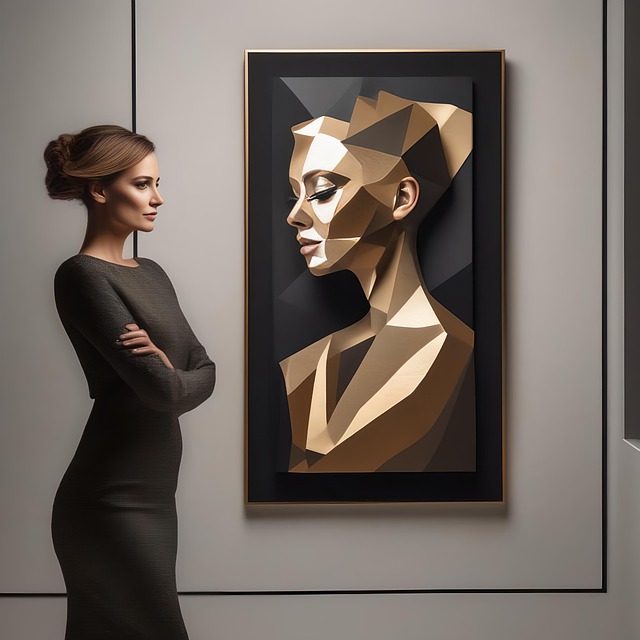# The Evolution of AI Art: How Algorithms Are Shaping the New Landscape of Visual Expression
The intersection of technology and creativity has always been a fertile ground for innovation, and nowhere is this more evident than in the realm of artificial intelligence (AI) and art. As algorithms become increasingly sophisticated, they are not only assisting artists but also redefining what it means to create and appreciate visual art. This article explores the transformative impact of AI on the art world, examining its historical context, current applications, and future possibilities.
## A Historical Context: From Tools to Collaborators
The journey of AI in art begins with the evolution of artistic tools. Historically, artists have embraced technology, from the invention of the camera to the development of digital painting software. Early experiments with computer-generated art in the 1960s laid the groundwork for the current AI revolution. Artists like Harold Cohen developed programs that could autonomously create visual works, albeit in a rudimentary form compared to today’s standards.
Fast forward to the 21st century, and the advent of machine learning and neural networks has ushered in a new era of creativity. Algorithms can now analyze vast datasets of existing artworks, learning styles, techniques, and even the emotional resonance of different visual elements. This ability allows AI to generate artwork that is not only visually appealing but also imbued with a sense of context and meaning. The transition from mere tools to creative collaborators marks a significant milestone in the evolution of AI art.
## Current Applications: Redefining the Creative Process
In contemporary art, AI is being utilized in a multitude of ways, fundamentally altering the creative process. Artists are now employing AI algorithms to generate ideas, create compositions, and even produce finished works. For instance, programs like DeepArt and Artbreeder allow users to input their own images and manipulate them using AI to produce unique artistic interpretations. These platforms democratize art creation, enabling individuals without formal training to engage in artistic expression.
Moreover, the role of the artist is evolving. Rather than being the sole creator, artists are becoming curators of the AI’s output. This collaborative approach challenges traditional notions of authorship and originality. The question arises: Who is the true artist—the human who inputs the parameters or the algorithm that generates the work? This dialogue between human creativity and machine learning is reshaping our understanding of artistic intent.
Additionally, AI is making waves in the commercial art world. Galleries and auction houses are beginning to recognize AI-generated works as legitimate art forms. Notable sales, such as the auction of the AI-generated portrait “Edmond de Belamy” for $432,500, have sparked debates about value, authenticity, and the future of art markets. As collectors increasingly seek out AI art, the market is responding, further legitimizing this new genre.
## Future Possibilities: Expanding the Boundaries of Art
Looking ahead, the potential for AI in art is boundless. As technology continues to evolve, so too will the capabilities of AI. Future advancements may enable algorithms to not only generate visual art but also to understand and interpret complex themes, emotions, and cultural contexts. Imagine an AI that can create a painting inspired by a specific historical event or a piece that captures the essence of a particular emotion, all while drawing from a rich tapestry of human experience.
Furthermore, the integration of AI with other emerging technologies, such as virtual reality (VR) and augmented reality (AR), presents exciting possibilities for immersive art experiences. Artists could create interactive installations that respond to viewer engagement in real-time, blurring the lines between creator and audience. This evolution could lead to entirely new forms of storytelling and expression, where the viewer becomes an active participant in the artistic process.
However, the rise of AI art also raises important ethical considerations. Questions about copyright, ownership, and the implications of AI-generated content on traditional artists must be addressed. As AI becomes a more prominent player in the art world, discussions surrounding its role and impact will be crucial in shaping the future landscape of visual expression.
## Conclusion: A New Era of Artistic Expression
The evolution of AI art represents a paradigm shift in how we conceive of creativity and artistic expression. By transforming algorithms from mere tools into collaborative partners, artists are redefining their roles and the very nature of art itself. As we navigate this new landscape, it is essential to embrace the opportunities that AI presents while remaining vigilant about the ethical implications of its use.
In summary, the relationship between art and technology is a dynamic one, and AI is at the forefront of this evolution. As we stand on the brink of a new era in visual expression, it is clear that the fusion of human creativity and artificial intelligence will continue to shape the future of art in profound and unexpected ways. The journey into this uncharted territory promises to be as exciting as it is transformative, inviting us to reconsider what it means to create and appreciate art in the 21st century.

